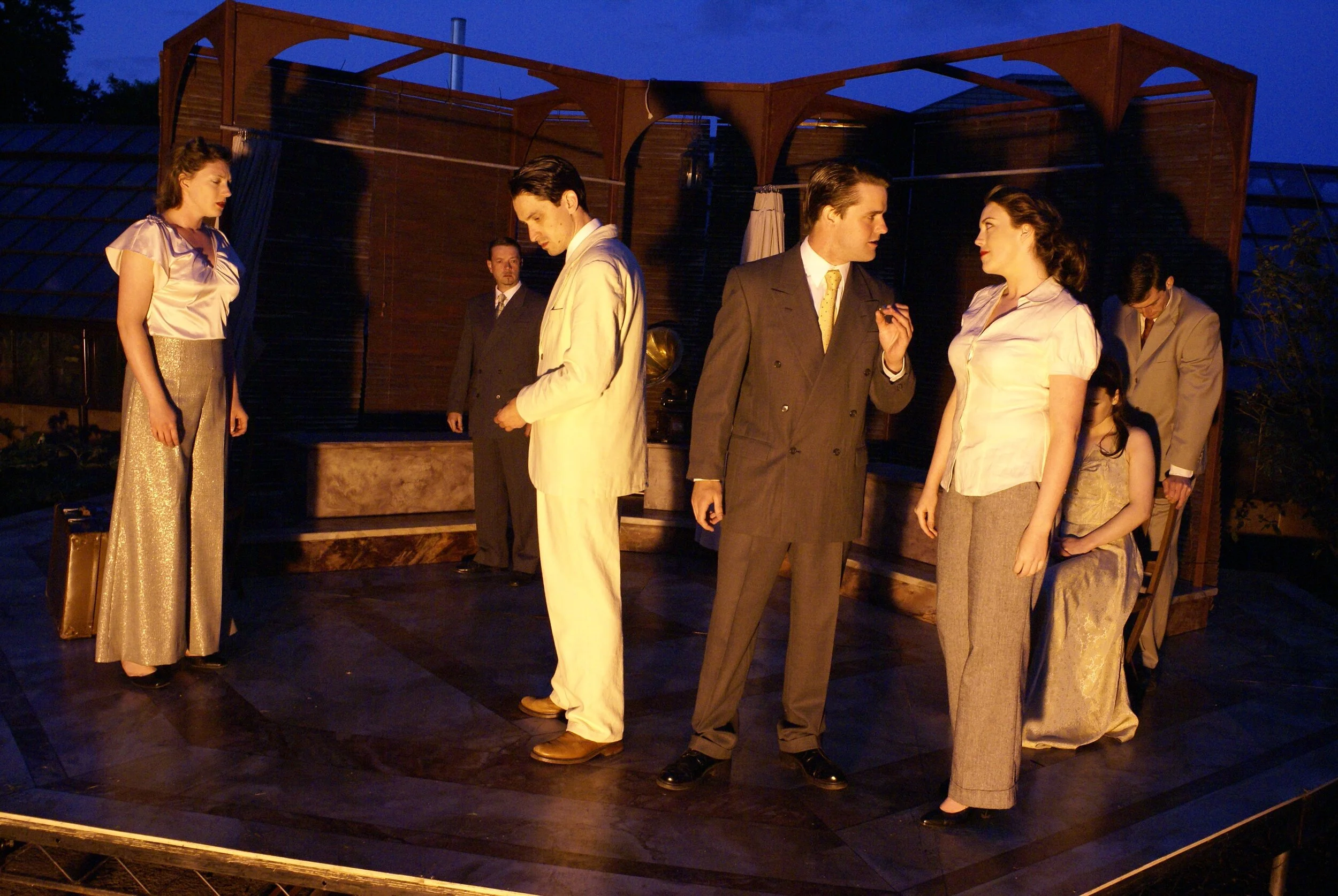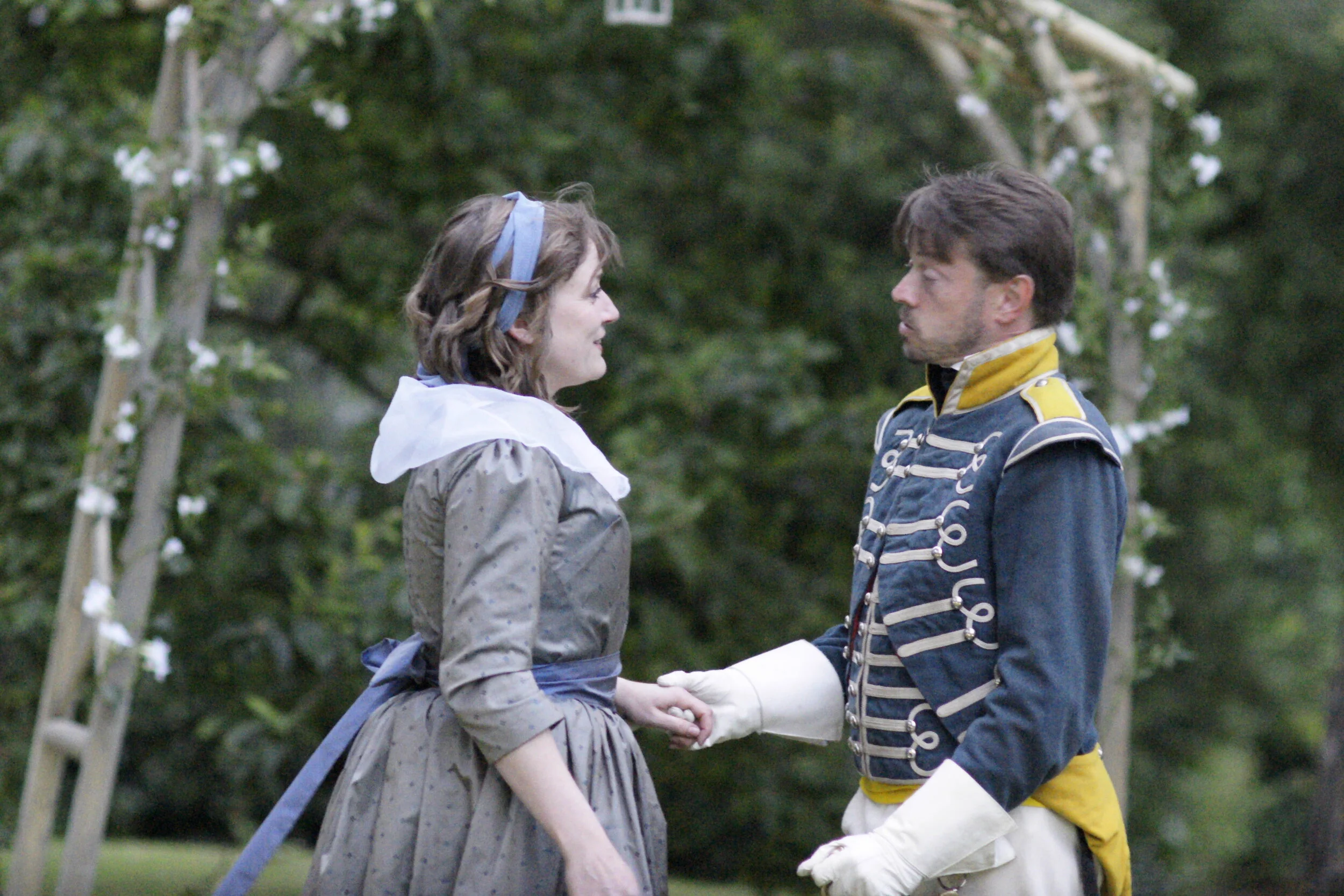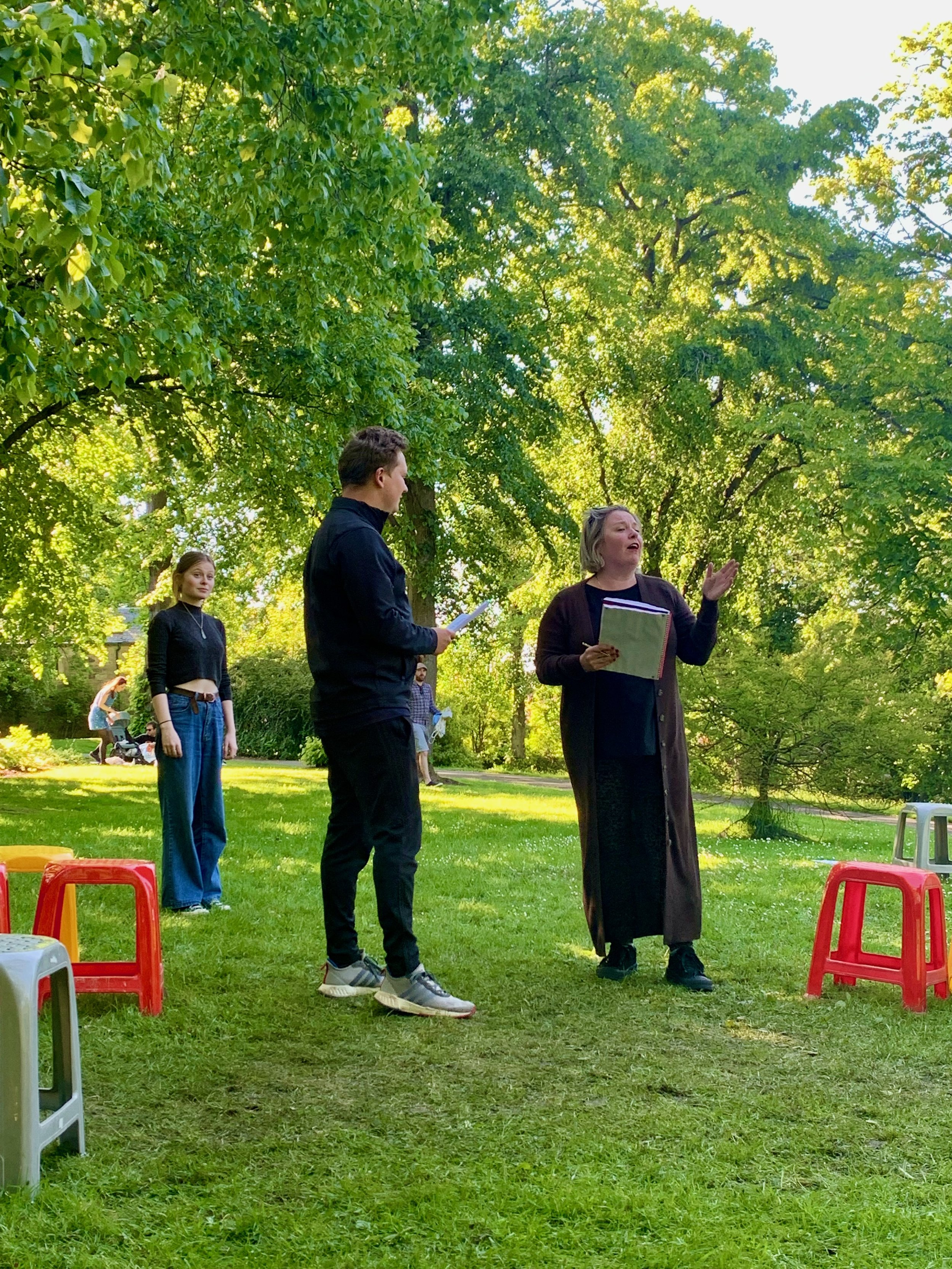20 Years in 20 Weeks - Looking back to Bard in the Botanics 2016
/20 YEARS IN 20 WEEKS
It’s that time of the week again and, this time, we’re looking back on 2016 and our 15th Anniversary Season.
2016 began with a project cementing our long-standing relationship with the Royal Conservatoire of Scotland’s MA Classical & Contemporary Text course. Since 2011, we had welcomed acting & directing students from the course on placement to Bard in the Botanics each summer and in 2016 we became co-producers of their Renaissance Text Productions. Bard’s Artistic Director, Gordon Barr, directed a haunting production of “Hamlet” while Associate Director, Jennifer Dick, took on a joyous & heartfelt production of “Much Ado About Nothing”. We have a great passion at Bard in the Botanics for working with actors in training and supporting their development in performing Shakespeare and the team thoroughly enjoyed working so closely with the MA CCT students and team.
Samuel Pashby as Laertes & Hannah Parker as Ophelia in “Hamlet” at the Royal Conservatoire of Scotland
The summer’s “Vaulting Ambition” season featured four titles where central characters brought about their own downfall through overreaching – the title characters of “Macbeth”, “Coriolanus” & “Dr Faustus” and Malvolio in the season’s opening production, “Twelfth Night”.
Jennifer Dick’s take on “Twelfth Night” paid homage to the great TV writer & director, Dennis Potter, creator of “The Singing Detective”, “Pennies from Heaven” and many more. In his shows, characters would often break out of their own reality into fully choreographed, lip synced musical numbers. Jennifer would use the same device in her 1960’s set “Twelfth Night” to highlight the characters hidden inner desires, to both hilarious and touching effect. The production also saw its central romantic quartet – Viola, Olivia, Orsino & Sebastian – all played by actors of the opposing gender to the character, a nod to the play’s gender confusion and a recognition of the play’s underlying message that we fall in love with the individual, not their outward trappings. If Orsino can fall in love with a girl disguised as a boy – why can’t he played by a girl and fall in love with a boy playing a girl playing a boy – or, in other words, Orsino loves Viola no matter who they are!
The company of “Twelfth Night” (Photo credit: Tommy Ga-Ken Wan)
Meanwhile, in the Kibble Palace, Gordon Barr staged our first ever production of “Coriolanus”, with the mighty warrior and most traditionally “masculine” of Shakespeare’s tragic heroes, Caius Martius Coriolanus, reinvented as a female character for actor, Nicole Cooper. Her breathtaking performance in the role cemented her position as one of Scotland’s leading classical actors and saw her win a Critics Award for Theatre in Scotland for Best Actress – a fitting celebration of her immense talent. She was supported by a tremendous cast, including the Bard in the Botanics’ debut of Scottish theatre legend, Janette Foggo, as Coriolanus’ fearsome mother, Volumnia. The play’s politics took on an incredibly timely edge when the production’s opening night coincided with the result of the Brexit referendum – Shakespeare’s central arguments about the elite vs. the popular vote spoke to audiences so vividly across the centuries!
Nicole Cooper as Caius Martia & Alan J Mirren as Tullus Aufidius in “Coriolanus” (Photo credit: Tommy Ga-Ken Wan)
In the second half of the season, Gordon Barr directed his first production of Shakespeare’s ever popular tragedy, “Macbeth”, for the company. Set in a dilapidated nursery and utilising only 5 actors, the production played out as a living nightmare for the Macbeths (Kirk Bage & Nicole Cooper), grieving for their lost child and attempting to fill the void in their lives by reaching for the ultimate prize – the crown. The central couple were haunted throughout the play by the character of the Witch, as played by Robert Elkin. Caked in flaking white make-up, sometimes taking on other characters in the story, sometimes appearing as a spectral force visible only to Macbeth or his wife, this terrifying figure was perhaps the creepiest creation ever to grace the Bard in the Botanics’ stage.
Nicole Cooper (Lady Macbeth); Kirk Bage (Macbeth) & Robert Elkin (The Witch) in “Macbeth” (Photo credit: Tommy Ga-Ken Wan)
Finally, the 2016 season saw us introduce a new strand to our work – “Writing the Renaissance” – an opportunity to explore the other writers of the Renaissance period, who might have influenced or been influenced by Shakespeare. We kicked off this new strand with a production of Christopher Marlowe’s “Doctor Faustus”, an epic battle between heaven and hell for one man’s soul – an appropriately ambitious play for us to launch this new endeavour! Jennifer Dick’s ingenious adaptation cleverly reimagined the play for just 3 actors – Adam Donaldson in the title role, Stephanie McGregor as the demon Mephistopheles and Ryan Ferrie as her opposing force, the Good Angel. Under Jennifer’s direction, the power of their collective imagination took audiences on a journey that spanned the globe and 25 years, all without leaving Faustus’ study.
Stephanie McGregor (Mephistopheles); Adam Donaldson (Faustus) & Ryan Ferrie (The Good Angel) in “Doctor Faustus” (Photo credit: Tommy Ga-Ken Wan)
In 2016, our “vaulting ambition” didn’t confine itself only to Glasgow. After the summer season, “Macbeth” headed out on the road, visiting theatre spaces, castles & Botanic Gardens across Scotland, from Dundee to St Andrews to very apt Cawdor Castle. As Bard in the Botanics cemented its place as Scotland’s premier Shakespeare company, we were delighted to share our work with audiences across the country.
Christmas saw us return to the Byre Theatre in St Andrews for our fourth annual panto – “Aladdin”. With the popularity of the shows building year on year, “Aladdin” saw us break all previous box office records for a Byre panto – even without the means to feature a flying carpet! Many of Bard’s regular faces returned for another year of Christmas mayhem, showcasing their incredible versatility as performers – Alan Steele shifting effortlessly from the urbane, witty senator Menenius in “Coriolanus” to belting out “Proud Mary” in full Tina Turner get-up as Widow Twankey; Stephanie McGregor relinquishing Mephistopheles’ demonic powers to play the hapless Wishy-Washy and Robert Elkin shedding the Witch’s creepy skin to become the most friendly and ebullient of panto pals as the Genie of the Lamp.
Robert Watson (Aladdin), Christina Gordon (Jasmine) & the Young Cast of “Aladdin”
FUN FACTS:
- Jennifer Dick’s production of “Much Ado” at RCS included one of our favourite ever random props for a Shakespeare play. In this version, Dogberry & the Watch were imagined as groundskeepers for a great Highland Estate and in their offices was a shrine to the god of gardeners – Alan Titchmarsh! The production also managed to incorporate a game of “Pop-Up Pirate”! What would Shakespeare have made of it all – we reckoned he’d have loved it!
- One of the many “lip sync” musical numbers in “Twelfth Night” was “Twitterpated” by Betty Driver – a popular singer from the 1960’s, she would reach greater fame in “Coronation Street” as the iconic hotpot maker & barmaid, Betty Turpin
- After 15 years of staging outdoor theatre, we know very well that bad weather can randomly strike at any time during a performance – but some scenes just feel cursed. We lost count of the number of times that Adam Donaldson (Malvolio) & Stephanie McGregor (Feste) would get soaked during the “dark house” scene – even on a completely dry night, it felt like the heavens would open for just that one moment. It wasn’t pleasant for Adam & Stephanie but it did get a big laugh for Samantha McLaughlin’s Sebastian when her first line of the following scene was “This is the glorious sun” – yeah, right!
- Kirk Bage became the first Bard actor to play the same character in two completely different productions when he returned to the role of Sir Toby Belch in “Twelfth Night”, six years after first playing it in 2010. To differentiate his takes on the character, Kirk requested that this time he wore his Falstaff fat suit for the character – he’s a brave man putting that costume item back on again!
- “Coriolanus” is one of Shakespeare’s most physically demanding roles – her skill & prowess on the battlefield is essential to the character. So it was terrifying when Nicole, after filming the shows trailer, fell down some steps and sprained her ankle. Thankfully it only took her out of action for a few days, but both she & director, Gordon Barr, had a sleepless night trying to work out how to tell the story of Rome’s mightiest warrior without ever seeing her fight!
- The sound of a crying child was a recurring motif in the soundscape for “Macbeth” but with the Botanic Gardens being a popular spot for families with young children, it was often difficult to tell when a sound cue had been mistimed or a real crying baby was nearby. The phrase, “Real baby? Fake baby?” became a regular cry during rehearsals!
- “Macbeth” is often considered as a cursed play in the theatre and, as rehearsals went on, the company became increasingly convinced that there was some truth to the legend. Every time that Robert Elkin’s Witch would cast the famous spell – “Hubble, bubble, toil & trouble” – heavy, dark clouds would roll in, often from nowhere. We really began to believe we were summoning some dark forces – not helped by the fact that, at the same time, Adam Donaldson’s Faustus was conjuring the devil in another rehearsal space – spooky times!
- “Macbeth” also featured some of Bard’s most gruesome moments – whether the bloody entrails which the Witch pulled out of a baby doll; the childlike bones & dust which tumbled out of the swaddled baby clothes that Lady Macbeth had just lifted from their crib or the spectacle of Macduff’s son being smothered to death with his own teddy bear – it was a pretty dark show!
- “Doctor Faustus” remains our most popular Kibble Palace production ever, just edging out 2019’s “Richard III” & 2018’s “Antony & Cleoptra” in terms of audience attendance. “Macbeth” proved to be one of our most popular outdoor shows ever as well. Who knew that making pacts with evil forces was so popular?!
2016 COMPANY:
The “Vaulting Ambition” Season:
Gillian Argo (Design – Macbeth; Set Design – 12th Night); Kirk Bage (Sir Toby Belch / Macbeth); Gordon Barr (Artistic Director); Esme Bayley (Antonia); Nicole Cooper (Coriolanus / Lady Macbeth); Jennifer Dick (Director – 12th Night & Dr Faustus); Adam Donaldson (Malvolio / Faustus); Robert Elkin (Viola / The Witch); Ryan Ferrie (Olivia / Good Angel); Janette Foggo (Volumnia); William Foote (Sir Andrew Aguecheek); Suzie Goldberg (DSM); Duncan Harte (Virgilius); Eleanor Henderson (Sicinia); Carys Hobbs (Design – Faustus; Costume Design – 12th Night & Coriolanus); Kylie Langford (Costume Supervisor); Stephanie McGregor (Feste / Mephistopheles; Choreographer – 12th Night); Samantha McLaughlin (Sebastian); Alan J Mirren (Aufidius & Brutus / Macduff & Duncan); Andrew Mundt (Valentine); Samuel Pashby (Titus Lartius); Emilie Patry (Orsino & Maria / Banquo & Lady Macduff); Juta Pranulyte (Composer – Macbeth); Sam Ramsay (Festival Manager); Jake Robertson (Cominius); Bobbi Jean Shields (Wardrobe Assistant); Marc Silberschatz (Fight Director); Alan Steele (Menenius); Laurie Sutton (ASM); Lisa VillaMil (Assistant Fight Director)
“Hamlet” / “Much Ado About Nothing” RCS Company: Gordon Barr (Director – Hamlet); Esme Bayley (Don John / Georgia Seacole); Zoe Bullock (Margaret / Dogberry); Danielle Calderone (Friar Frances / Verges); Jennifer Dick (Director – Much Ado); William Foote (Claudio); Chris Ginesi (Polonius); Suzie Goldberg (Production Stage Manager); Katherine Haan (Leonata); Duncan Harte (Benedick); Simon Hayes (Lighting Design); Eleanor Henderson (Beatrice); Carys Hobbs (Designer); Ellen Jerstad (Assistant Director); Alice Langley (Assistant Director – Hamlet); Fiona McWhirter (Wardrobe Supervisor); Andrew Mundt (Don Pedro); Tierney Nolen (Horatio); Samantha McLaughlin (Hamlet); Amelia Noble (Hero); Hannah Parker (Ophelia / Player Queen); Samuel Pashby (Laertes / Player King); Kaija Pellinen (Marcellus / Rosencrantz / Gravedigger); Juta Pranulyte (Composer – Hamlet); Jake Robertson (Claudius / Ghost); Rachel Schmeling (Ophelia / Player Queen); Marc Silberschatz (Fight Director); Sally Simpson (Composer – Much Ado); Olivia Stevenson (Borachio); Emily Anne Strong (Barnardo / Guildenstern / Osric); Lisa VillaMil (Gertrude)
“Aladdin” Company: Stephen Arden (Abanazar; Choreographer); Gillian Argo (Set Design); Gordon Barr (Writer & Director); Rory Beaton (Lighting Design); Samantha Burt (DSM); Robert Elkin (Slave of the Ring / Genie of the Lamp); Ashley Foster (Young Cast Liaison); Christina Gordon (Jasmine); Carys Hobbs (Costume Design); Kylie Langford (Deputy Wardrobe Supervisor); Stephen Roberts (Composer & Musical Director); Alan Steele (Widow Twankey); Sam Ramsay (Stage Manager); Robert Watson (Aladdin)

















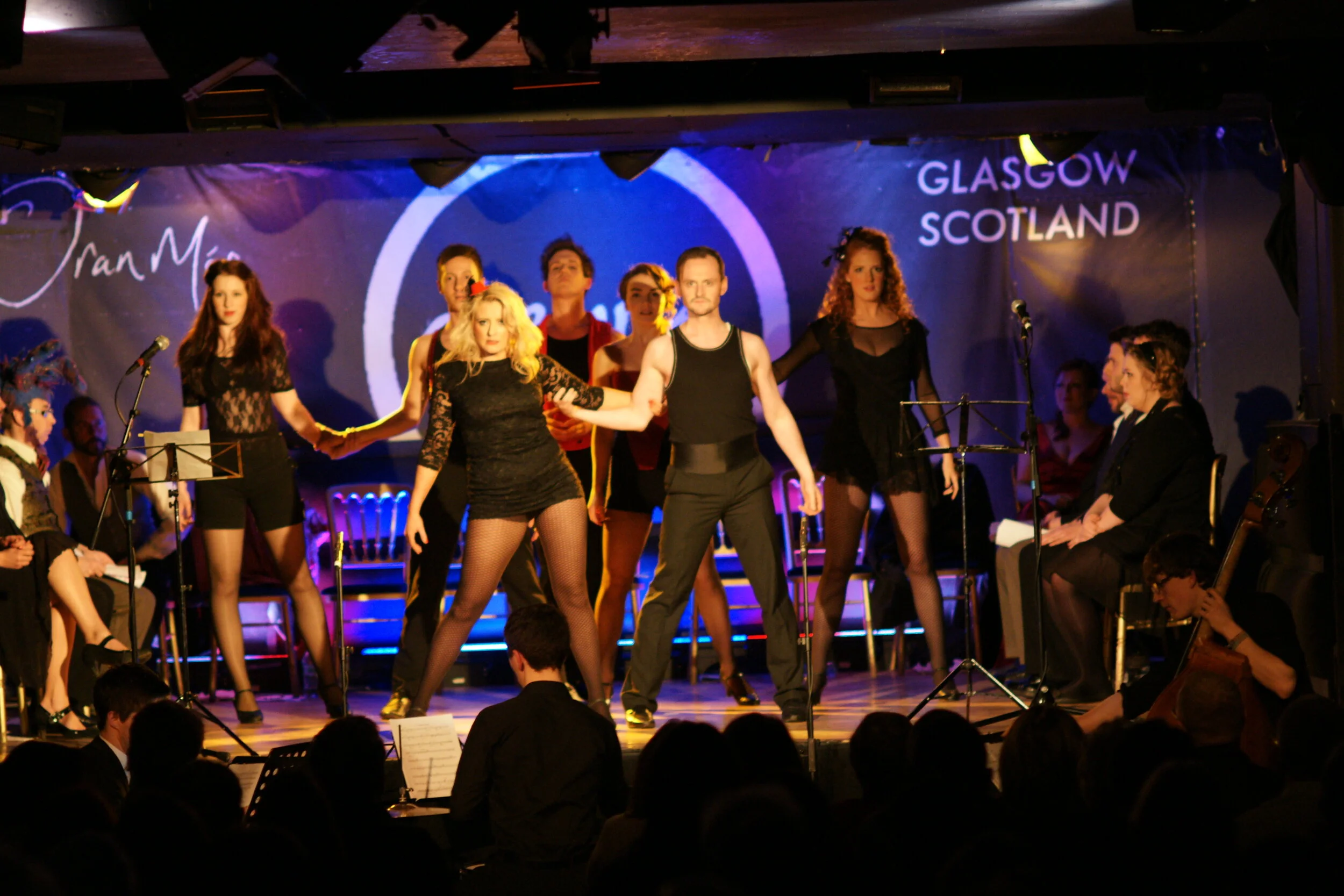


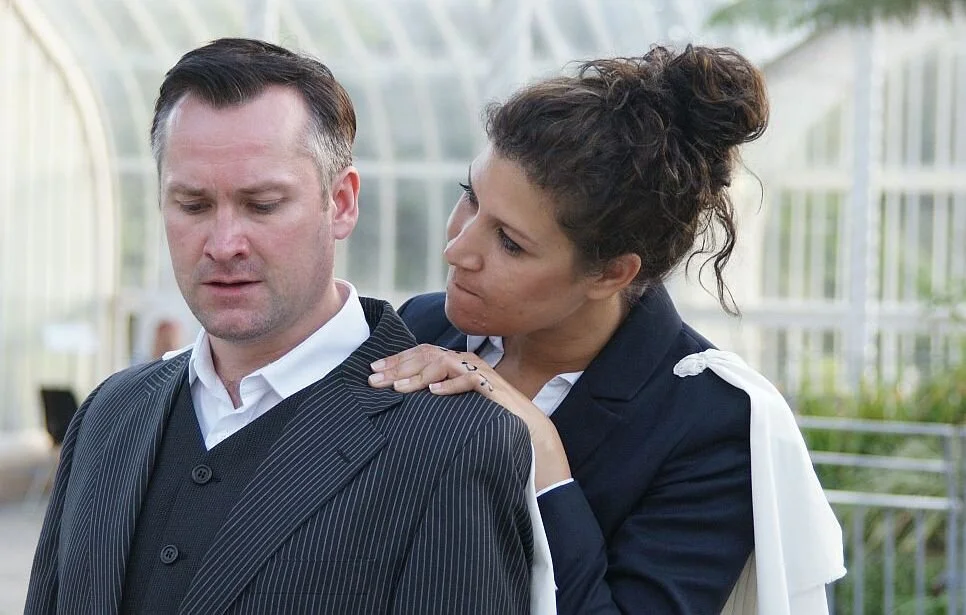






![DSC09214[1].JPG](https://images.squarespace-cdn.com/content/v1/58cf19dd2994ca05c6f7c93f/1619702155839-CTJA7F9CYRMC27U66YAQ/DSC09214%5B1%5D.JPG)









